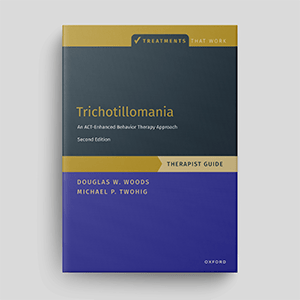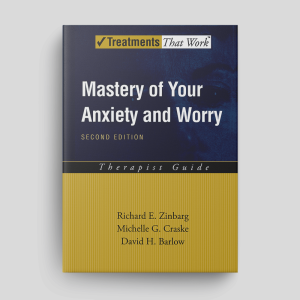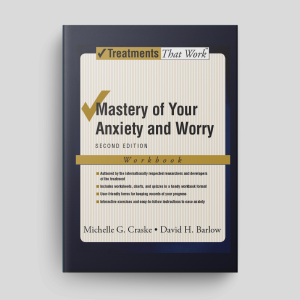Trichotillomania: An ACT-Enhanced Behavior Therapy Approach (Second Edition): Workbook
This workbook provides a structured, evidence-based approach to addressing trichotillomania (TTM) or 'hair-pulling disorder' that draws on habit reversal training (HRT) and acceptance and commitment therapy (ACT). It is designed to help clients understand, manage, and overcome TTM. A therapist guide is downloadable separately.
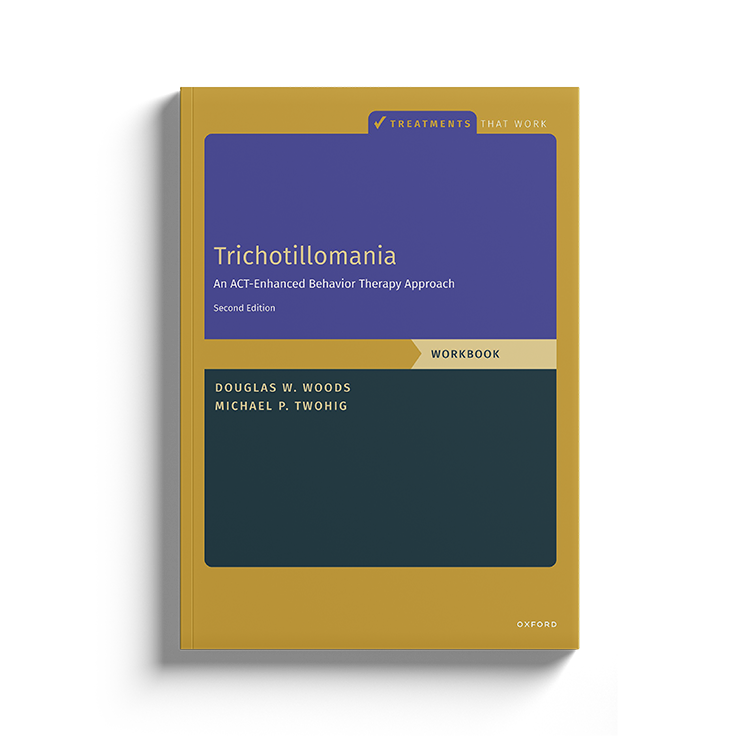
Download or send
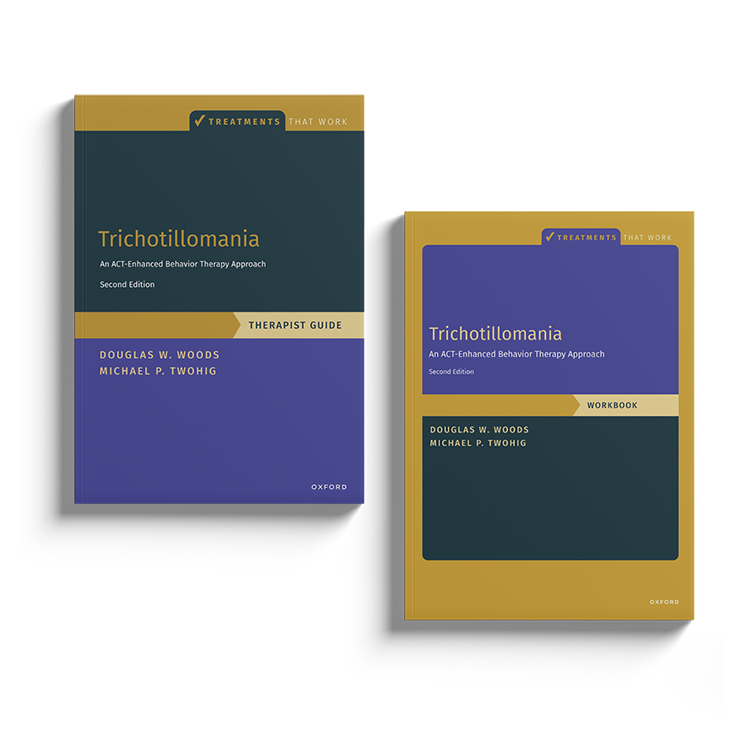
Overview
Trichotillomania (TTM) is a condition characterized by repetitive hair-pulling that causes visible hair loss, significant distress, and impairment in daily functioning. Often misunderstood and underdiagnosed, TTM can impact emotional well-being and lead to social and physical complications. This treatment manual offers a comprehensive approach to managing TTM by combining habit reversal training (HRT) and acceptance and commitment therapy (ACT). HRT teaches clients to recognize and interrupt pulling behaviors with alternative actions, while ACT addresses the emotional and cognitive factors driving the behavior, such as urges, stress, and psychological inflexibility. The program emphasizes skill-building, self-monitoring, and values-based action to reduce pulling and improve quality of life. Structured across ten sessions, it includes psychoeducation, trigger reduction strategies, acceptance of pulling-related experiences, and relapse prevention techniques. Research supports the efficacy of this approach, showing significant reductions in pulling severity and meaningful clinical responses in both individual and group formats.
Why use this resource?
This workbook provides a structured, accessible program for clients struggling with trichotillomania (TTM), written by experts.
- Explains what maintains TTM.
- Describes effective interventions for overcoming TTM.
- Broken into a series of accessible chapters for clients.
- Authored by world-leading experts in the field
- Accompanied by a dedicated therapist guide.
Key benefits
Structured
Educational
Evidence-Based
Flexibile
Trusted
What difficulties is this for?
Trichotillomania (TTM; Hair-Pulling Disorder)
Clients struggling with chronic hair-pulling.
Integrating it into your practice
Assessment
Explore how clients experience TTM.
Psychoeducation
Teach clients about TTM and what maintains it.
Skills
Encourage clients to read the workbook and implement the strategies it describes.
Monitoring
Use structured worksheets and feedback to track progress and refine interventions.
Relapse Prevention
Equip clients with long-term strategies for maintaining their progress.
Theoretical background and therapist guidance
Trichotillomania (TTM), also known as hair-pulling disorder, is a chronic condition characterized by repetitive hair-pulling that leads to noticeable hair loss, functional impairment, and significant emotional distress (American Psychiatric Association, 2013). While historically under-recognized, recent research indicates a current prevalence rate of approximately 1.7% in the general population (Grant et al., 2020). TTM most commonly begins in late childhood or early adolescence, with an average onset between ages 10 and 13, and it often follows a chronic, waxing-and-waning course (Grant & Chamberlain, 2016; Stein et al., 1999). The disorder affects individuals physically, socially, and psychologically. Along with hair loss, common physical complications include scalp irritation, follicle damage, and, in extreme cases, trichobezoars, which can lead to gastrointestinal obstructions caused by hair requiring surgical intervention (Snorrason et al., 2021). Socially, individuals with TTM frequently report avoidance of public activities, interpersonal difficulties, and occupational impairment (Woods et al., 2006). Psychiatric comorbidities such as depression, anxiety, and substance use disorders are prevalent, affecting up to 80% of individuals with TTM (Houghton et al., 2016a).
This treatment integrates two empirically supported approaches: habit reversal training (HRT) and acceptance and commitment therapy (ACT). HRT focuses on disrupting automatic pulling behaviors by increasing awareness of triggers and implementing alternative, competing responses. ACT complements this by targeting the cognitive and emotional processes underlying focused pulling. Rather than attempting to suppress urges or uncomfortable emotions, ACT teaches clients to accept these internal experiences while committing to behaviors aligned with their personal values. This dual approach recognizes that TTM often involves both automatic and intentional pulling processes and provides targeted interventions for each (Grant et al., 2007; Flessner et al., 2008b). Research indicates that these approaches significantly reduce hair-pulling behaviors and severity, with most participants maintaining gains after treatment. Research also supports their adaptability, with group formats achieving high response rates and teletherapy yielding comparable outcomes to in-person sessions.
The program includes two books:
- Trichotillomania: An ACT-Enhanced Behavior Therapy Approach (Second Edition): Therapist Guide
- Trichotillomania: An ACT-Enhanced Behavior Therapy Approach (Second Edition): Workbook
Authored by leading psychologists including David Barlow, Michelle Craske and Edna Foa, Treatments That Work™ is a series of manuals and workbooks based on the principles of cognitive behavioral therapy (CBT). Each pair of books (Therapist/Clinician Guide and Workbook) - contains step-by-step procedures for delivering evidence-based psychological interventions and will help you to provide the best possible care for your clients.
At Psychology Tools, we are proud to make many of the Treatments That Work™ titles available to our members. Each book is available to download chapter-by-chapter, and Psychology Tools members with a currently active subscription to our ‘Complete’ plan are licensed to share copies with their clients.
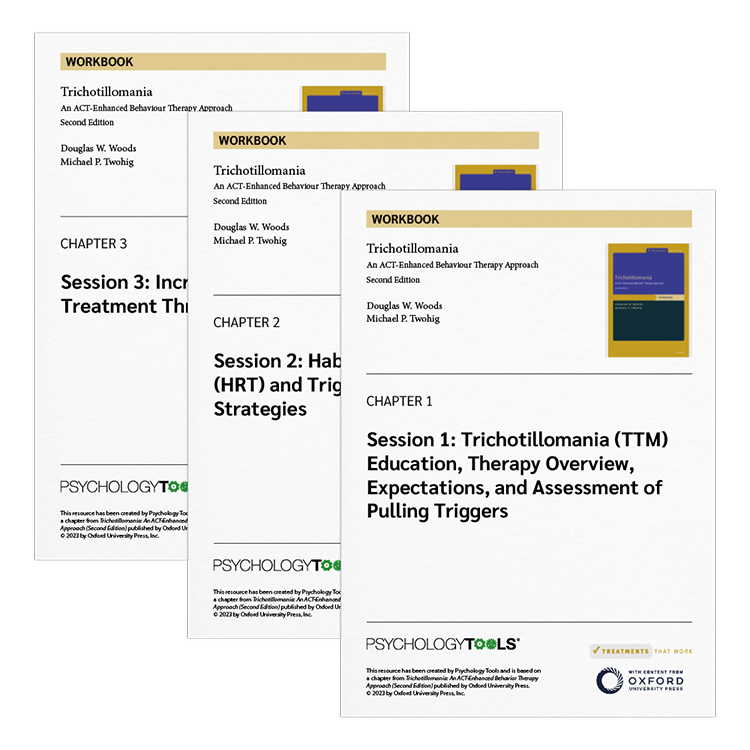
What's inside
- Comprehensive psychoeducation about TTM.
- Effective interventions for achieving long-term improvement.
- Strategies for reducing the risk of relapse.
- Engaging and accessible content written specifically for clients.
FAQs
How this resource helps improve clinical outcomes
By using this workbook, clients benefit from:
- A structured and accessible approach that targets their difficulties.
- Trustworthy guidance and information.
- Effective techniques that enhance progress.
- Tools that support both in-session work and out-of-session practice.
- Lasting improvements and reduced risk of relapse.
References and further reading
- Woods, D. W., & Twohig, M. P. (2023). Trichotillomania: An ACT-Enhanced Behavior Therapy Approach Workbook. Oxford University Press.
- Grant, J. E., Dougherty, D. D., & Chamberlain, S. R. (2020). Prevalence, gender correlates, and co-morbidity of trichotillomania. Psychiatry research, 288, 112948. https://doi.org/10.1016/j.psychres.2020.112948
- Novak, C. (2009). Genetic factors in trichotillomania: A review of research findings.
- Neal-Barnett, A. (2015). Cultural considerations in the treatment of body-focused repetitive behaviors.
Just enter your name and email address, and we'll send you Trichotillomania: An ACT-Enhanced Behavior Therapy Approach (Second Edition): Workbook (English US) straight to your inbox. You'll also receive occasional product update emails wth evidence-based tools, clinical resources, and the latest psychological research.
Product
Company
Support
- © 2025 Psychology Tools. All rights reserved
- Terms & Conditions
- Privacy Policy
- Cookies Policy
- Disclaimer
Working...
We value your privacy
This site uses strictly necessary cookies to function. We do not use cookies for analytics, marketing, or tracking purposes. By clicking “OK”, you agree to the use of these essential cookies. Read our Cookie Policy
